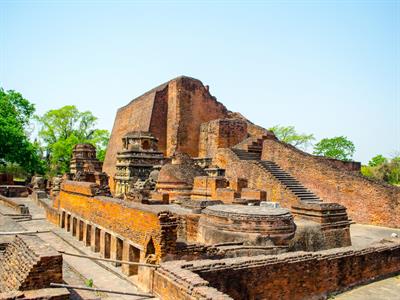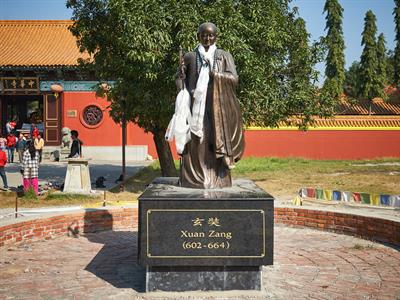PDF chapter test TRY NOW
NALANDA UNIVERSITY:
ROLE OF COMMUNITY:
At that time, knowledge was considered sacred and no fee was charged. Contributions towards education were considered the highest form of donation. All members of the society contributed in some form or the other. Financial support came from rich merchants, wealthy parents and society. Besides gifts of buildings, the universities received gifts of land. This form of free education was also prevalent in other ancient universities like Valabhi, Vikramshila and Jagaddala.
At the same time in the south of India, agraharas served as centers of learning and teaching. South Indian kingdoms also had other cultural institutions known as Ghatika and Brahmapuri. A Ghatika was a centre of learning including religion and was small in size. An agrahara was a bigger institution, a whole settlement of learned Brahmins, with its own powers of government and was maintained by generous donations from the society. Temples, Mathas, Jain Basadis and Buddhist Viharas also existed as other sources of learning during this period.
Explanation:
Located in present day Rajgir, Bihar, India, Nalanda was one of the oldest universities of the world and UNESCO declared the ruins of Nalanda Mahavihara a world heritage site. It functioned between the \(5th\) and \(13th\) century. Xuan Zang was a famous Chinese Buddhist monk who visited India during the seventh century. He visited with the purpose of tracing Chinese Buddhism with Indian Buddhism. He visited various Buddhist monasteries and sites. When he visited Nalanda, it was called Nala and was a centre of higher learning in various subjects.

Ruins of Nalanda University
Xuan Zang visited Nalanda along with I-Qing, another fellow Buddhist monk and translator. It is through their writings and reports that we get to know how the University flourished during the early days. They have recorded that nearly a hundred lectures and discourses were given in the University on various subjects and fields. Like Taxila, Nalanda used debates and discussions as the mode of teaching. Xuan Zang studied Yoga in Nalanda, under Shilabadhra, the chancellor of the University. The students trained themselves in various areas like astronomy, Vedas, Medicine etc.

A statue of Xuan Zang*
One important factor of education in Ancient days is that it was offered for free. Sponsors in the form of rich merchants and wealthy parents came in the form of lands and buildings. The only thing that was expected in return from the students was any form of contribution to the society, as in achieving in a particular field, researching or inventing on a new topic etc. Valabhi, Vikramshila and Jagaddala were also Universities that provided free education. When Nalanda and Taxila contributed to education in the north, The south of India had Agraharams, which is a Brahmin place of dwelling, where gurus taught the students Vedas and other subjects. It was also funded by donations from the society. While Agraharams provided a large space of study, Ghatika and Brahmapuri, a centre of learning including religion and small in size, also provided a space to explore education.
Words with difficult meaning:
| S.No | Words | Meaning |
1 | Scholars | A person who studies and has a lot of knowledge about a particular subject |
2 | Yogashastras | A mind and body practice to relax and stay fit |
3 | Ghatika | A smaller space to provide religious education |
4 | Mathas | An institute or place to rest and gain knowledge |
Reference:
- National Council of Educational Research and Training (2008). It so happened. Ancient Education System of India (pp. 89-97). Published at the Publication Division by the Secretary, National Council of Educational Research and Training, Sri Aurobindo Marg, New Delhi.
- A statue of Xuan Zang*: Vladimir Zhoga / Shutterstock.com
